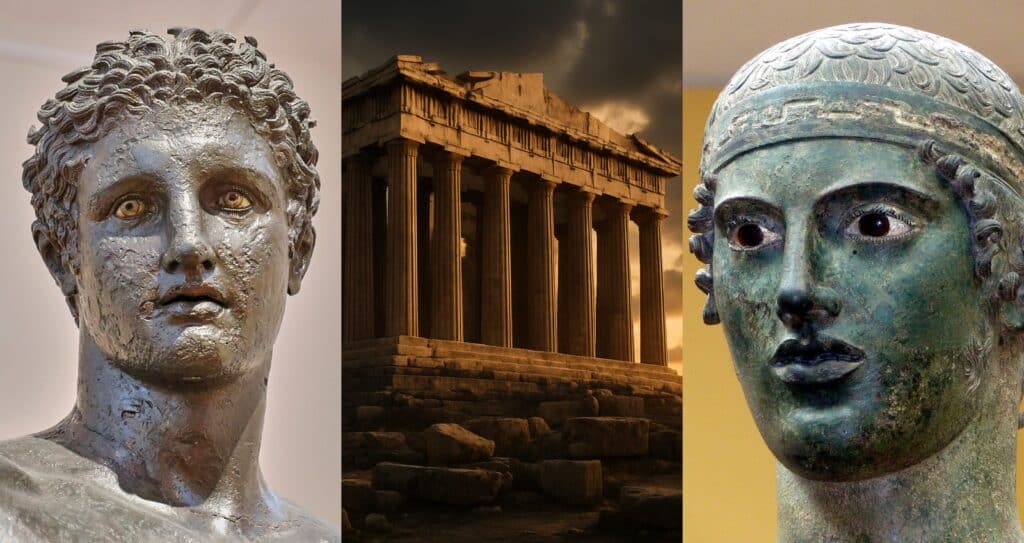

There is that image many of us have in our mind of Greek sculptures—noble looking with gleaming white marble and perhaps a bit of an emptiness about the eyes. However, that might be at least slightly inaccurate.
In thinking about these works of art, what we actually need to envision is something different. Imagine wandering through ancient Athens or Delphi. Your eye would probably catch sight of a bronze god who is not just standing but even gazing back at you with eyes made of shimmering stone and glass—so real, in fact, it’s almost unnerving. That was the jaw-dropping reality of Greek artists’ work, figures that seemed to breathe and watch those in their surroundings.

So what is the cause of this disconnect? Why do we think “white marble” when we picture Classical Greece? Why not something more vivid and realistic?
Simply put, it’s time that is mostly to blame—and possibly the Renaissance world falling in love with those clean lines. Over the centuries, the brilliant paintwork (yes, they were often vividly painted!) flaked away, and delicate inlays were lost.
Incredible pieces such as the Riace Bronzes, hauled up from the sea, have, nonetheless, completely changed the way we think about the ancient Greek figures, which weren’t monochromatic at all. The Charioteer, dating all the way back to about 478 BC, possesses intense calcite eyes with dark limestone pupils and even bronze lashes! He is focused, radiating the thrill of victory. It hits you the moment you see him: these ancient Greek sculptures were meant to look like living beings, encapsulating the very soul and psyche of gods and heroes.

Producing such vividness in the eyes of sculptures was no simple task but required serious skill, with Greek sculptors being among the best of the ancient world in their craft. Imagine the patience: carving out the sockets just right, shaping tiny bits of colored stone (maybe jasper or agate), glass paste, ivory, or even bone, and perfectly positioning them onto hard bronze or marble. Occasionally, artists would layer different material together to get the iris, pupil, and white of the eye just so.
Take a look at the Riace Bronzest—those two stunning warriors from the 5th century BC now housed in the Museo Nazionale della Magna Grecia in Italy. With their calcite eyes, possibly amber pupils, and individual copper eyelashes, such level of detail wasn’t just for show; it was about pushing the boundaries of art and using every trick of the trade. Greek artists’ metalwork and glass skills were particularly advanced for their time. They were able to make cold metal and stone practically come alive.
Nevertheless, one might wonder how we were ever able to retrieve these works of art after so many centuries. Of course, this was often not achieved through careful preservation in a temple for 2,500 years. Many actually emerged quite dramatically, pulled from the darkness of Mediterranean shipwrecks or uncovered from the soil after what might seem like an eternity of remaining buried in the layers upon layers of time. The famous Antikythera Ephebe, for instance, another bronze stunner with those lifelike eyes, emerged from the very same wreck that gave us the mind-boggling ancient “computer.”

Coming face to face with such ancient masterpieces is almost like getting a direct call from the past. Each find forces us to rethink what ancient Greek sculptures could have actually looked like, reminding us that the world of the ancients was richer, more colorful, and much more intense than we often imagine. Can you picture the moment a diver, brushing away silt, is suddenly met by a gaze crafted millennia ago? History is still out there, waiting to sneak up on us.
